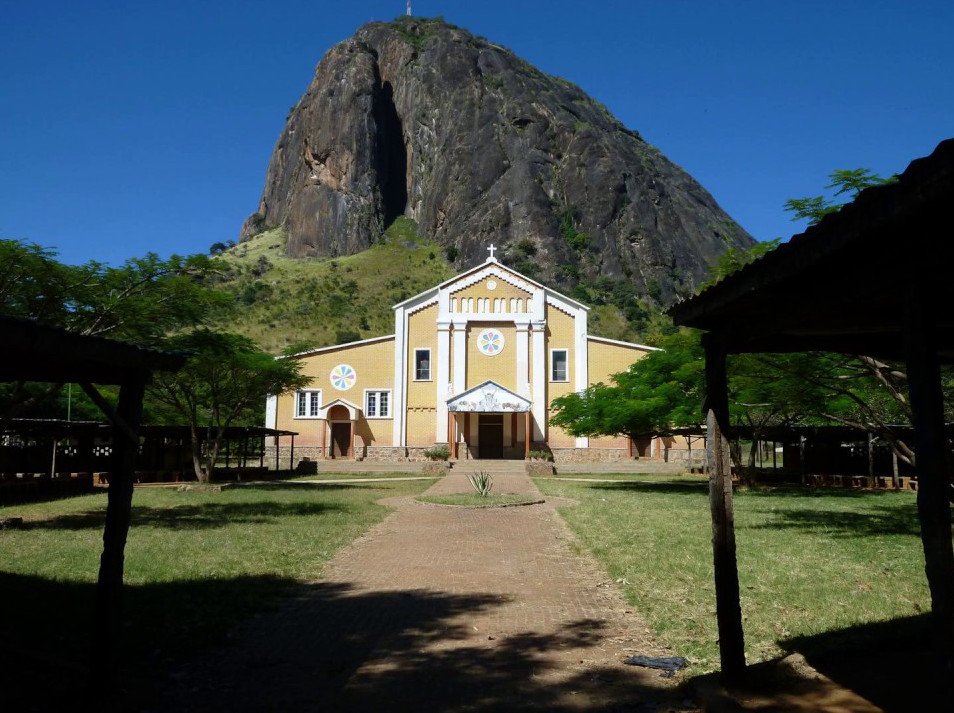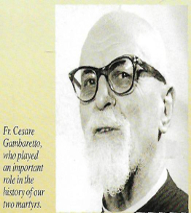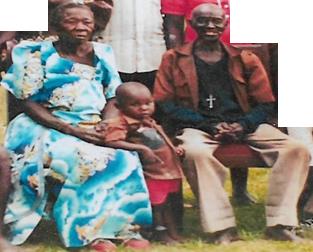
Kalongo Town is dominated by a Deaconry (formally Kalongo mission) which was established as a memorial to the two Martyrs of Wiipolo by Fr. Cesare Gambaretto with support from Yosefu Ocaya and his wife Natalia Adwar. It is a combination of the Church, hospital and schools in the town.

Fr. Cesare Gambaretto who gave the two Catechists the blessing and tools of their apostolate arranged to travel to Palamuku Village, in Paimol to collect the remains of Daudi and Jildo after they were killed. On his journey to Paimol he took with him Yosefu Ocaya, the son of Gabriel Acaye who came to Kitgum Mission as Catechumen from Omia Pacua together with his newly wedded wife Natalia Adwar.
Yosefu Ocaya was born and grew up in Omia Pacua, Lomoi Village not far from Palamuku Village, Paimol so he knew Rwot Lakidi, his deputy Ogal and brother Ocok Mukomoi, Okidi Ibrahim who killed Daudi Okelo and Opio Akadamoi who killed Jildo Irwa.
He also knew Rwot Amet, (Jago) Erenayo Angol (Rwodi Kalam Omiya) who were appointed by the British to replace traditional Chief Lakidi (Rwot moo) of Paimol.
When they arrived in Palamuku Village, Fr. Gambaretto was received and shown the spot where the two Catechists were speared to death and the termite mound (biye) where their remains were dragged and abandoned to rot. Their bones were collected for keep in Kitgum Mission.
A church/mission in memory of Daudi Okelo and Jildo Irwa could not be built at that time on the site where they were killed which had become known as Wii Polo. This was due to the scarcity of water in the area. Fr. Gambaretto was advised to go to a more suitable site in Kalongo with permanent reliable water source.

Acting on that advice Father Gambarreto together with Yosefu Ocaya (a tour guide) and his wife Natalia Adwar who carried items used for Mass continued their journey to Kalongo whereon reaching he set up a temporary grass thatched church and a Father’s house at the foot of Kalongo mountain (Oret) where Dr. Ambrosoli Memorial Hospital is now situated.
Yosefu Ocaya and his wife built their huts nearby. That was the beginning of establishing Kalongo Mission in memory of the martyrdom of the two Catechists. Kalongo Mission was detached from Kitgum Mission in 1934 and became the spring board for spreading the gospel of Jesus Christ in Kitgum East and Karamoja Region. It was the first fruit of the blood of Daudi Okelo and Jildo Irwa.
Kalongo Parish soon became the convergence Centre for Catechumate instructions for people in Kitgum East and later become the most successful Deanery for education and health care for people in Agago District and beyond.
At that time all the people who came for Catechumate instructions or migrated to the new Mission for education, to work as builders, teachers etc. were initially sent to Yosefu Ocaya by Parish Priest for their acclimatisation and allocation of areas for them to build their homes. As a result, Yosefu Ocaya became popularly known as Lagwok meaning a person who looks after people well!
Journey to the beatification of blessed Daudi Okelo and Jildo Irwa
This book is about the life, work and death of the two Martyrs of Wii Polo, Blessed Daudi Okelo and Jildo Irwa.
It takes you through the journey from their childhood, their first contact with missionaries, their Catechumate until their Martyrdom in October 1918.
It reveals the turning point that led to the beatification of Blessed Daudi Okelo and Jildo Irwa by Pope John Paul II (now St. John Paul II) on 20th October, 2002, discusses the lessons and messages of the Martyrs and looks at the present Status of the Wii Polo Shrine.
The book is written by Professor John Joseph Otim who is the son of Yosefu Ocaya and Natalia Adwar who travelled with Fr. Gambaretto to Palamuku (now Wii-Polo) in Piamol to recover the bones of Blessed Daudi Okelo and Jildo Irwa and then back to Kalongo to establish Kalongo Mission in memory of the martyrdom of the two Catechists. Professor Otim initiated the process that led to the eventual beatification of Blessed Daudi Okelo and Jildo Irwa.

